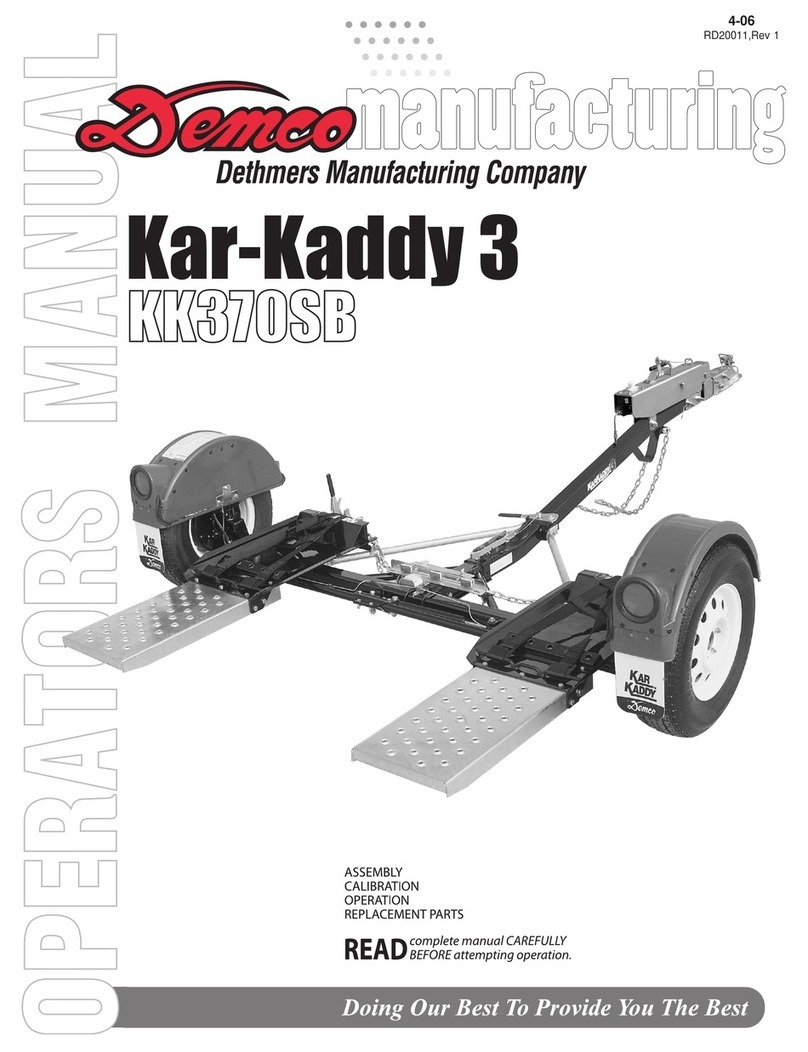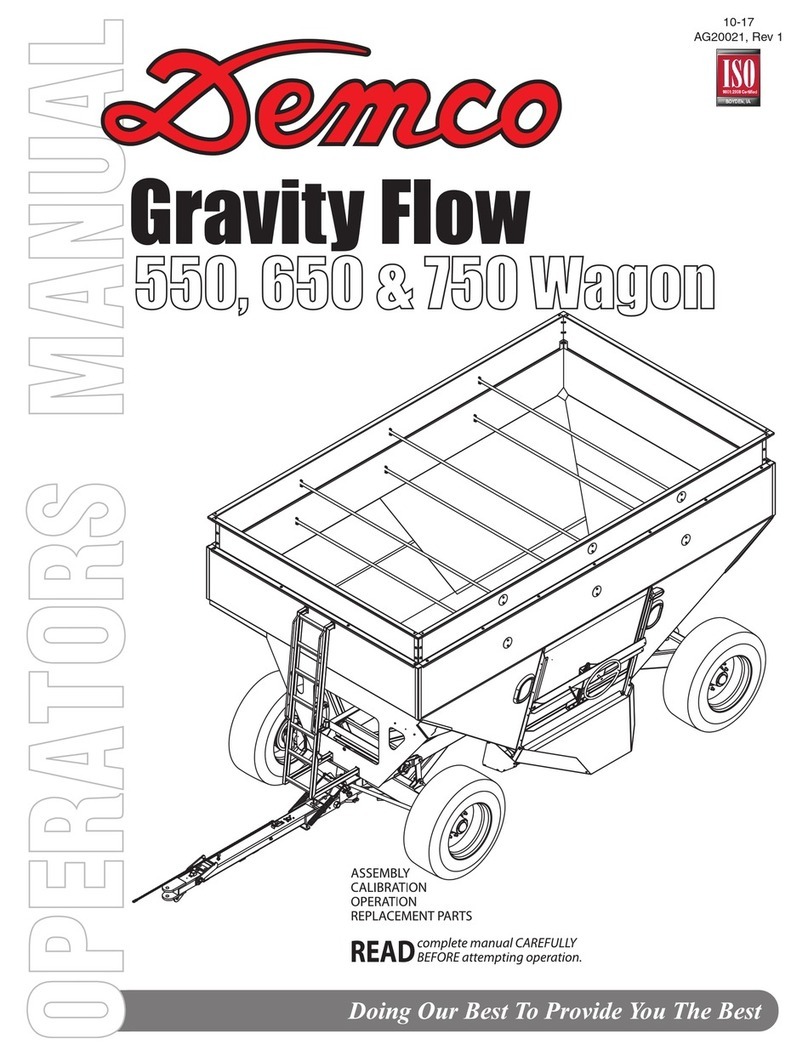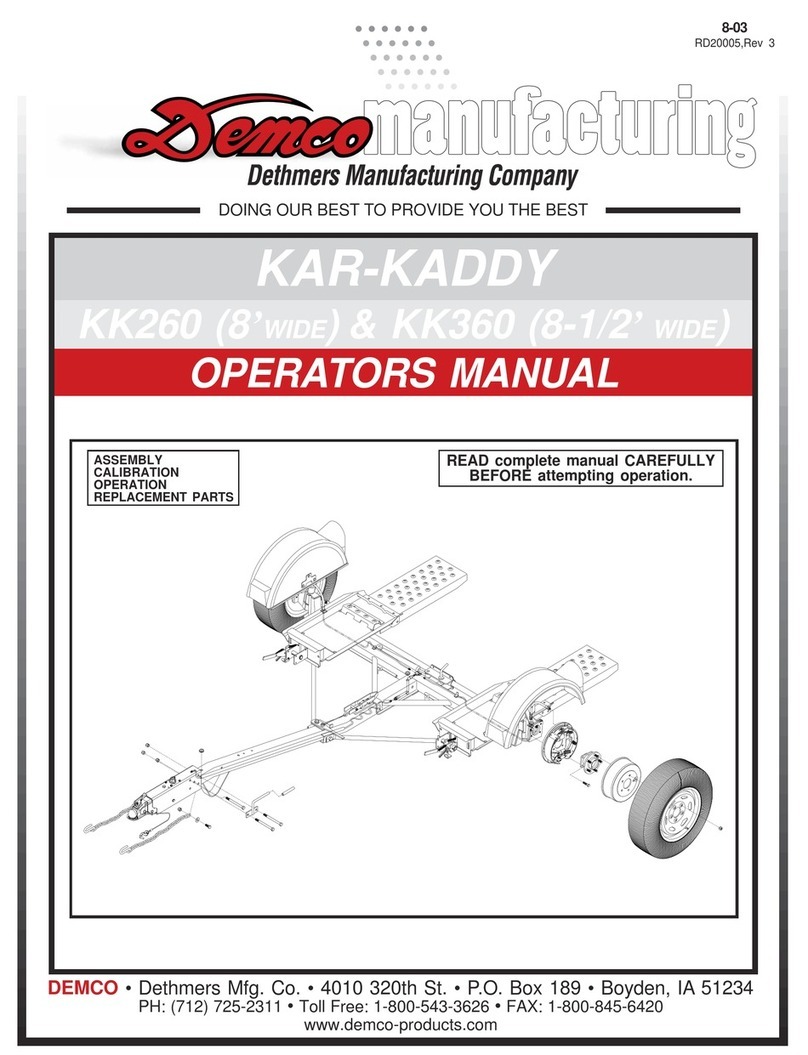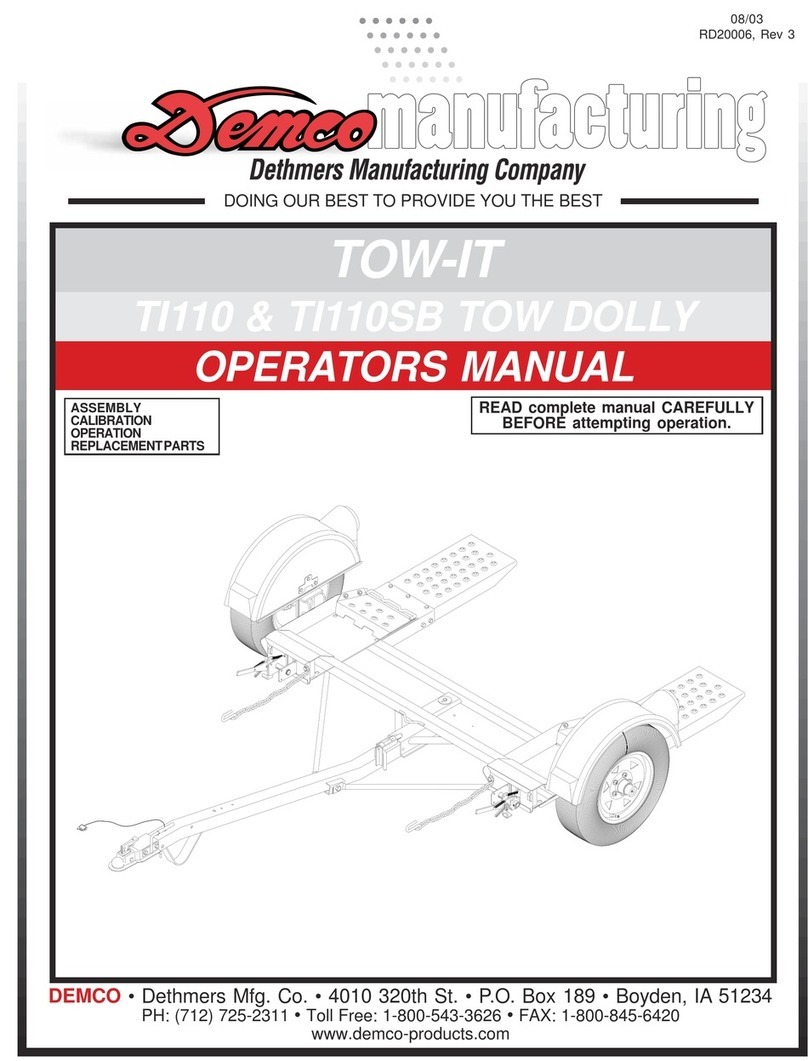
2
Thank you for purchasing a Demco Kar-Kaddy. We feel you have made a wise choice and hope you
are completely satisfied with your new piece of equipment.
GENERAL INFORMATION
1. Unless otherwise specified, high-strength (grade
5) (3 radial-line head markings) hex head bolts are
used throughout assembly of this piece of equip-
ment.
2. Whenever the terms “LEFT”and “RIGHT”are used
in this manual it means from a position behind the
Kar-Kaddy and facing forward.
3. When placing a parts order, refer to this manual for
proper part numbers and place order by PART NO.
and DESCRIPTION.
Introduction
To contact NHTSA, you may either call the
Auto Safety Hot line toll-free at
1-800-424-9393 (or 366-0129 in
Washington, D.C. area) or write to:
NHTSA,
U.S. Department of Transportation
Washington, D.C. 20590.
You can also obtain other information about
motor vehicle safety from the Hot line.
“Reporting Safety Defects”
If you believe that your vehicle has a defect
which could cause a crash or could cause injury or
death, you should immediately inform the National
Highway Traffic Safety Administration (NHTSA) in
addition to notifying Demco Manufacturing Company
(DEMCO).
If NHTSA receives similar complaints, it may
open an investigation, and if it finds that a safety
defect exists in a group of vehicles, it may order a
recall and remedy campaign. However, NHTSA
cannot become involved in individual problems
between you, your dealer, or (DEMCO).
TABLE OF CONTENTS
General Information ...............................................................................................................................Page 2
Tow Dolly Safety Guide........................................................................................................................Page 3-8
Decal Location........................................................................................................................................Page 9
Bolt Torque............................................................................................................................................Page 10
Tongue and Ramp Assembly................................................................................................................Page 11
Fender Assembly Instructions ..............................................................................................................Page 12
Wiring Diagram.....................................................................................................................................Page 13
Testing Lights........................................................................................................................................Page 13
Tongue Folding .....................................................................................................................................Page 14
Folding Ramps ................................................................................................................................Page 15-16
Loading Angle Clearance Guide...........................................................................................................Page 16
Safety, Maintenance, & Important Loading Instructions .......................................................................Page 17
Loading Instructions .....................................................................................................................Pages 18 -20
Toe-In Adjustment................................................................................................................................Page 21
Kar-Kaddy Breakdown Parts Assembly Instructions .....................................................................Page 22 - 23
DA91 Brake Actuator Parts Breakdown and List ..................................................................................Page 24
10” Disc Brake Parts Breakdown and List ............................................................................................Page 25
Brakes Line Parts Breakdown and List.................................................................................................Page 26
Winch & Tilt-Bed Parts Breakdown.......................................................................................................Page 27
Ramp Latch & License Plate Bracket Parts Breakdown.......................................................................Page 28
Fender Parts Breakdown......................................................................................................................Page 29
Spare Tire w/Mounting Bracket & Light Bar (optional) Parts Breakdown .............................................Page 30
Deflector (optional) Parts Breakdown...................................................................................................Page 31
WARRANTY POLICY, OPERATOR MANUALS & REGISTRATION
Go online to www.demco-products.com to review Demco warranty policies, operator manuals and register your Demco product.

































